#Plastics Pollution
Explore tagged Tumblr posts
Text
Nations Fail to Reach an Agreement on Plastic Pollution. (New York Times)
This story from the New York Times:
Diplomats at a United Nations conference in Busan, South Korea, failed to reach agreement on the world’s first treaty to tackle plastic pollution on Sunday. They said they would reconvene in future months to try again.
At what was supposed to be the final round of talks, nations struggled to bridge wide differences that remained over critical issues, including whether the treaty should include limits on plastics production itself.
Some of the world’s largest producers of petroleum had vehemently opposed any measure that would restrict plastic production. The vast majority of the world’s plastic is made from petroleum.
Representatives from those countries argued, instead, that the treaty should stay focused on improving recycling and waste management.
Delegates gathered at the conference also remained far apart on the need to phase out some of the harmful chemicals used in plastic, as well as who should bear the costs of implementing the treaty.
Juliet Kabera, a delegate for Rwanda, which had led the push for a wide-ranging treaty, said a “small number” of countries had remained “unsupportive of the measures necessary to drive real change.”
“Rwanda cannot accept a toothless treaty,” Ms. Kabera said.
Saudi Arabia, which joined Russia, Kuwait and other oil-producing countries to oppose plastic production curbs, said nations needed to consider other approaches.
“If we address plastic pollution, there should be no problem with producing plastics,” said Abdulrahman Al Gwaiz, a Saudi delegate. “The problem is pollution itself, not plastics.”
Environmental groups urged nations to adopt an ambitious, legally binding treaty. Earlier in the weeklong negotiations, protesters in Busan rallied around a model of a sperm whale stuffed with plastic waste, displaying slogans like “Courage not compromise.”
The world produces nearly a half-billion tons of plastic each year, more than twice the amount produced two decades ago. Images of plastic trash on coastlines and river banks prompted calls for a global treaty to address the problem of plastic waste.
As of late Sunday in Busan, no date nor place had been announced for the next round of talks.
0 notes
Text
"UN Environment Programme @UNEP #INC5 talks to end plastic pollution have begun in Busan 🇰🇷
The world has made it clear: no more plastic on our shores, bodies or environment.
It’s time for a #PlasticsTreaty.
@andersen_inger outlines some of the priorities this week."
#INC5#Intergovernmental Negotiating Committee#Inger Andersen#Plastics Treaty#Plastics Pollution#UNEP#United Nations Environment Programme#INC5 Busan
0 notes
Text
Even out in the open ocean, Laysan albatrosses like Makana can’t escape the effects of plastic pollution. These incredible seabirds often mistake floating plastic for food, with devastating consequences for themselves and their chicks.
That’s why Monterey Bay Aquarium is participating in the final meeting of the Global Plastics Treaty, which kicked off today. We’re advocating for a strong treaty to protect wildlife, our health, and the future of our planet.
#monterey bay aquarium#global plastics treaty#INC5#lets turn off the plastic tap#a solution to plastic pollution
2K notes
·
View notes
Text
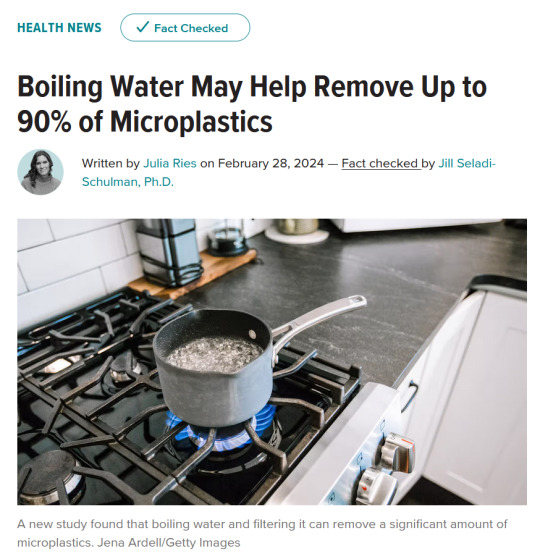
ETA: Article here (can't believe I forgot this rip)
A new study finds you can reduce the amount of microplastics you drink simply by boiling your water.
Scientists are just beginning to understand the health risks associated with microplastic exposure.
Nano- and microplastics are bits of plastic as tiny as one-thousandth of a millimeter in diameter.
Boiling and filtering your tap water may dramatically lower the amount of microplastics you drink, according to new research.
Recent studies have found that nano- and microplastics (NMPs), which are bits of plastic as tiny as one-thousandth of a millimeter in diameter, have been found in a host of products and even in tap water.
A new study, published February 28 in Environmental Science & Technology Letters, found that boiling mineral-rich water for just five minutes can reduce the amount of NMP you’re exposed to by up to 90%.
Scientists are just beginning to understand the health risks associated with microplastic exposureTrusted Source, but growing evidenceTrusted Source suggests the plastics can accumulate in the body and trigger oxidative stress, inflammation, insulin resistance, and liver issues.
Certain advanced water filtration systems can capture and help remove some NMPs from tap water. But researchers wanted to figure out other options to remove microplastics, especially since in poorer countries cheaper, more accessible solutions for clean water are needed.
Boiling water may be a safe, simple solution that can effectively decontaminate household tap water, the new findings suggest.
“Boiling water before drinking is a great example of an ancient cultural practice that can help reduce an environmental exposure,” Dr. Luz Claudio, PhD, a professor of environmental medicine and public health at the Icahn School of Medicine at Mount Sinai, told Healthline.
Claudio was not involved in the study.
How boiling water can help remove microplastics
The researchers found simply boiling water is the first step to removing NMPs from tap water.
The researchers collected multiple samples of tap water from Guangzhou, China and contaminated the samples with varying levels of NMPs.
Each sample was boiled for five minutes then left to cool for 10 minutes.
Boiling hard water that’s rich with minerals — such as calcium or magnesium — creates a chalk-like residue known as limescale, or calcium carbonate (CaCO3), which can trap the plastics.
That solid, chalky residue then had to be separated and removed from the water with a standard coffee filter or stainless steel filter, thereby removing NMPs.
The team found that the impact was greatest in harder water: In samples that had 300 milligrams of CaCO3, for example, nearly 90% of NMPs were removed.
In softer water samples with less than 60 mg of CaCO3, roughly 25% of NMPs were removed.
“What’s important to note here is that the effectiveness of trapping these micro/nano plastics in these mineral solids is tied to how hard the water is – the harder the water, the more solids are formed, the more microplastics are trapped,” Dr. Anja Brandon, PhD, the associate director of U.S. plastics policy at Ocean Conservancy and an environmental engineer, told Healthline.
Brandon was not involved in the study...
How to limit your exposure to microplastics
Anyone who wishes to boil their water should do so in a glass or stainless steel pot.
After boiling the water for about five minutes, let it cool, and do not stir it, Claudio says.
The microplastics need to bind to the calcium and fall to the bottom of the pot so they can filtered or scooped out."
-via Healthline, February 28, 2024
#microplastics#nanoplastics#hard water#calcium carbonate#public health#plastic pollution#good news#hope
3K notes
·
View notes
Text
Five years has gone by since Aquaman was unfortunately bitchslapped by the momma whale for defending her calves, one being adopted baby mer.
And the sighting of the little merman continued throughout the world, as media caught wind breeze of little white-haired mer baby playing with dolphins passing by a Cruise ship.
Arguments had started over the lone mer baby across the continents, between capturing and captivity the merbaby, letting the merbaby be, or protecting the merbaby from poachers and collectors that was suggested by PETA.
Aquaman has already discussed on behalf of the Sea and Justice League that it was best for the merbaby to be left alone for it is last of its kind to appear in thousands of years in Altanta after the Momma whale crashed sixth would be poachers and endangered species ships.
Pictures, description, and documentary began of the last merbaby journey. A new video was sent live every few weeks as sea creature biologists team and their swimmers who trail behind momma whale and her calves.
Momma whales, leaving her calves for their own harsh journey in the deep blue sea, the once tiny merbaby was the size a double wide life boat.
The once beautiful trails of sparkling white and neon green color, fade gray, and black tips mer tailwind was now deep black with green and blue bioluminescence lighting all over his tail trailing from the faded jellyfish scars, His skin was once pale is now dark tanned color. His white as a pearl hair was measured by a picture frame to be the length of 12 inches with clownfishes swimming in and out every once a as a symbiote reaction, eyes glowing darker then a neon green light and teeth sharper then a great white shark.
It was a simple Tuesday of the Justice League watching the latest video of was now known to the world nicknamed the adolescent mer, phantoms the merman day.
When something that caused everyone to jump from their own seats all together that shook and amazed the world
Phantom kept dipping into the deep dark trenches of the deep blue sea rather frequently, but for the five years now, it was normal interest of curiosity that he just like to go there.
Until today, when he came out, with 5 other Mers.
One massive mer with white hair that resemble a great whale shark or what could've been a megalodon swam slowly watching the others who there was female sea horse like mer with black hair and purple and green like patterns trail behind along side a silky like dark skinned shark mer with Egyptian like pattern and old gold relic tied in his hair, massive large orange haired humaniod jellyfish like mer the size of a sperms whale swam, as Phantom was hugging, swimming around excitedly and trilling bubbles onto a tiny little new merbaby with white hair with similar patterns as him except with a red scarf like tied to her little wrist.
Original first part here <-
#dpxdc#dc x dp#danny phantom#dp x dc#dp x dc crossover#dc x dp prompt#dcxdp#de aged danny#baby mer danny#early mermay#aquaman#mer danny became a constantly sea documentary for everyone#unawared his existence boomed the sea cleaning franchise and pollution cleaning after getting tangled in a plastic can container one time#team phantom became mers to visit danny#de aged dani#ellie came along because she getting sick of dan and vlad arguing#redeemed dan came because he want to defend his case on mauling Vlad#dont fucking steal my story bots#dont steal my story bots
1K notes
·
View notes
Text
From the article:
The two students presented their groundbreaking project at the 2024 International Science and Engineering Fair (ISEF); a device that operates by using ultrasound waves to push microplastic particles to one side of a water flow, allowing clean water to pass through while trapping the contaminants. In their tests, the system successfully captured up to 94 per cent of microplastic particles, showing promise for real-world applications. "If we could refine this, maybe use more professional equipment, maybe go to a lab instead of testing from our home, we could really improve our device and get it ready for large-scale manufacturing," Justin told Business Insider. The duo envisioned their device being used in water treatment plants, directly modifying the quality of water for daily use. This application could significantly reduce the amount of microplastics that end up in water sources, protecting ecosystems and human health.
#microplastics#water filtration#plastics#plastic pollution#pollution#good news#environment#sustainability#hope#hopepunk#ecology#water conservation
1K notes
·
View notes
Text
#air pollution#arctic#beluga whale#blue whales#british columbia#candice gaukel andrews#climate change#drinking water#environment#marine life#marine pollution#microplastics#natural habitat adventures#nathab#nature#noise pollution#norway#ocean pollution#plastics#plastics pollution#polyester#science#science and environment#scientific research#svalbard#wild#wildlife#world wildlife fund#wwf
1 note
·
View note
Text
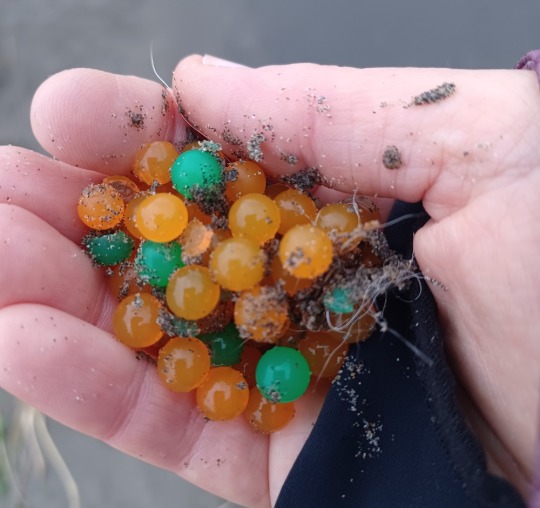
Welcome to my Tuesday morning PSA about plastics!
So--I was walking along the Bolstadt beach approach sidewalk here in Long Beach, WA yesterday afternoon, and I started seeing these little orange pellets on the ground that looked a little bit like salmon roe (but probably weren't). So I picked one up, and it was most definitely rubber. I went around picking up every one I could find, and while I didn't keep exact count I probably amassed 50-60 of them. I took this picture before depositing them in the nearest trash can.
These are airsoft gun pellets, and you can buy them in big jars containing thousands of them. That means that someone who decided that the beach was a great place to shoot their airsoft guns could easily litter the place with countless little bits of plastic rubber in less than an hour. We already have a huge problem here with people leaving trash, including tiny bits of plastic, all over the beach (you should see the gigantic mess after 4th of July fireworks when thousands of people come in from out of town, blow things up, and then leave again without picking up after themselves.)
But these airsoft pellets have a particularly nasty side effect. You know how my first thought was "wow, those look kind of like salmon roe?" Well, we have a number of opportunistic omnivore birds like crows, ravens, and several species of gull that commonly scavenge on the beach, especially along the approaches because people often feed them there. If I can catch the resemblance of an orange airsoft pellet to a fish egg, then chances are there are wildlife that will assume they're edible.
Since birds don't chew their food, they probably won't notice that the taste or texture is wrong--it'll just go down the hatch. And since they can't digest the pellets, there's a good chance they might just build up in the bird's digestive system, especially if the bird eats a large number of them--say, fifty or sixty of them dropped on the ground along the same fifty foot stretch of sidewalk. The bird might die of starvation if there's not enough capacity for food in their stomach--or they might just die painfully of an impacted gut, and no way to get help for it. If the pellets end up washed into the ocean, you get the same issue with fish and other marine wildlife eating them, and then of course the pellets eventually breaking up into microplastic particles.
You can get biodegradable airsoft pellets; they appear to mainly be gray or white in color rather than bright screaming orange and green. But "biodegradable" doesn't mean "instantly dissolves the next time it rains." An Amazon listing for Aim Green biodegradable airsoft pellets advertise them as "Our biodegradable BBs are engineered to degrade only with long-term exposure to water and sun and will degrade 180 days after being used." That's half a year for them to be eaten by wildlife.
I don't know, y'all. That handful of carelessly dropped rubber pellets just encapsulates how much people don't factor in the rest of nature when making decisions, even on something that is purely for entertainment like an airsoft gun. We could have had a lot of the same technological advances we have today, but with much less environmental impact, if we had considered the long-term effects on both other people and other living beings, as well as our habitats. We could have found ways from the beginning to make these things in ways that benefited us but also mitigated any harm as much as possible. Instead we're now having to reverse-engineer things we've been using for decades, and sometimes--like the "biodegradable" airsoft pellets--they still have a significant negative impact.
But--at least there are people trying to do things better, thinking ahead instead of just on immediate profit. We're stuck in a heck of a mess here, figuratively and literally, and changing an entire system can't be done in a day. Maybe we can at least keep pushing for a cultural shift that emphasizes planning far into the future--if not the often-cited "seven generations ahead", then at least throughout the potential lifespan of a given product.
#plastics#microplastics#environment#environmentalism#conservation#nature#pollution#litter#birds#tw animal death#animal welfare#ecology#science#wildlife#animals#scicomm#pnw#airsoft#biodegradable#solarpunk
4K notes
·
View notes
Text
With microplastics now permeating our food and our bodies, researchers are keen to assess the potential damage these tiny fragments could be doing. A new study shows how plastics may lead to dangerous blood flow blockages in the brain. The study, led by a team from the Chinese Research Academy of Environmental Sciences in Beijing, involved tracking microplastics in blood vessels moving through mouse brains in real time – the first time microplastic movement has been tracked in this way.
Continue Reading.
638 notes
·
View notes
Text
#vegan leather#plastic pollution#plastics#pleather#leather alternatives#leather#environmentalism#good news#science#environment#bacteria#microbiology#genetic engineering
786 notes
·
View notes
Text
Plastic producers have known for more than 30 years that recycling is not an economically or technically feasible plastic waste management solution. That has not stopped them from promoting it, according to a new report. “The companies lied,” said Richard Wiles, president of fossil-fuel accountability advocacy group the Center for Climate Integrity (CCI), which published the report. “It’s time to hold them accountable for the damage they’ve caused.” Plastic, which is made from oil and gas, is notoriously difficult to recycle. Doing so requires meticulous sorting, since most of the thousands of chemically distinct varieties of plastic cannot be recycled together. That renders an already pricey process even more expensive. Another challenge: the material degrades each time it is reused, meaning it can generally only be reused once or twice. The industry has known for decades about these existential challenges, but obscured that information in its marketing campaigns, the report shows. The research draws on previous investigations as well as newly revealed internal documents illustrating the extent of this decades-long campaign. Industry insiders over the past several decades have variously referred to plastic recycling as “uneconomical”, said it “cannot be considered a permanent solid waste solution”, and said it “cannot go on indefinitely”, the revelations show. The authors say the evidence demonstrates that oil and petrochemical companies, as well as their trade associations, may have broken laws designed to protect the public from misleading marketing and pollution.
1K notes
·
View notes
Text
The Plymouth Marine Laboratory contributes significantly to global microplastic research through pioneering efforts and influential findings. They coined the term "microplastics" and were the first to demonstrate their ingestion by marine organisms, revealing the global distribution of microplastics from deep oceans to Arctic ice.
59 notes
·
View notes
Text
Socks, food, and the ocean—they all have one thing in common: microplastics.
To tackle the microplastic pollution problem, researchers and policy experts from the Aquarium and @mbari-blog created an open-source library dedicated to helping researchers trace these tiny culprits back to their source. Check out the webcomic below to learn more!
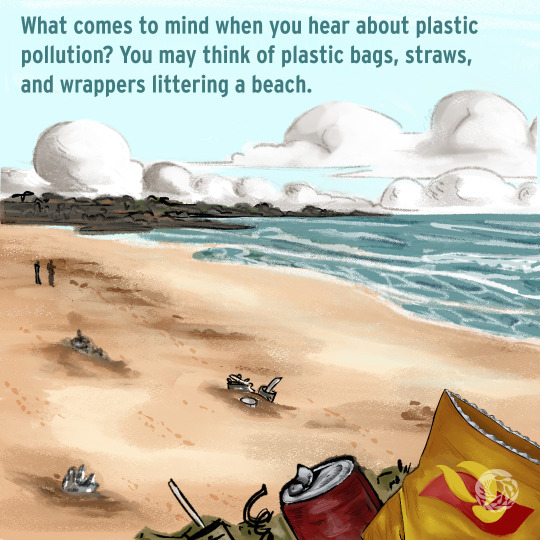
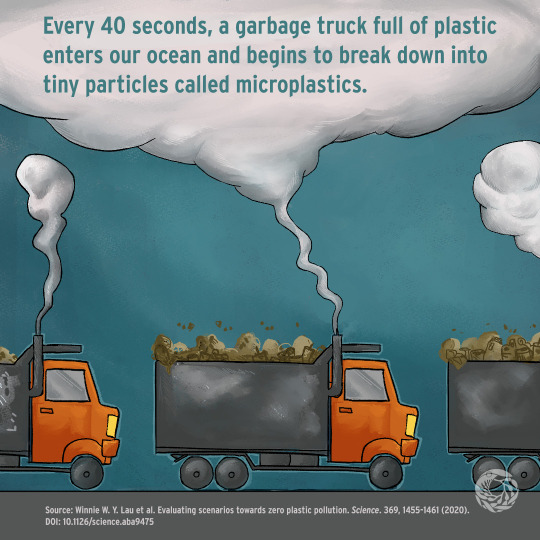
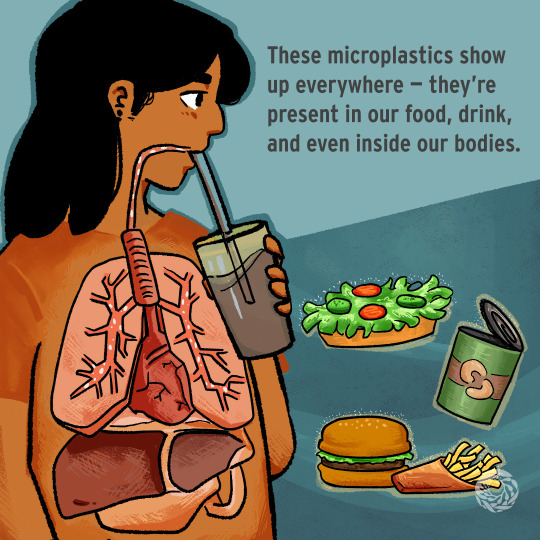

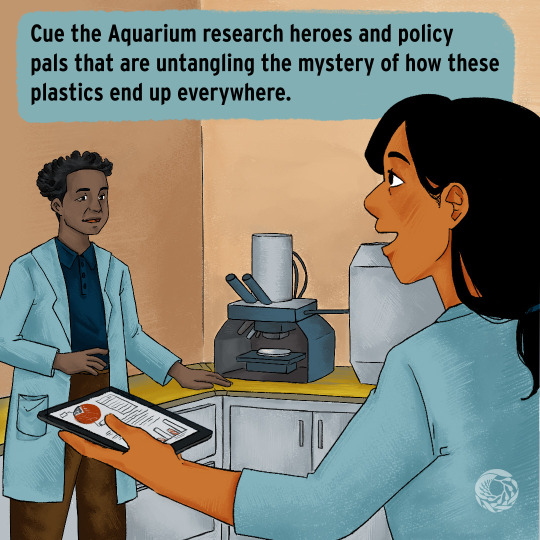
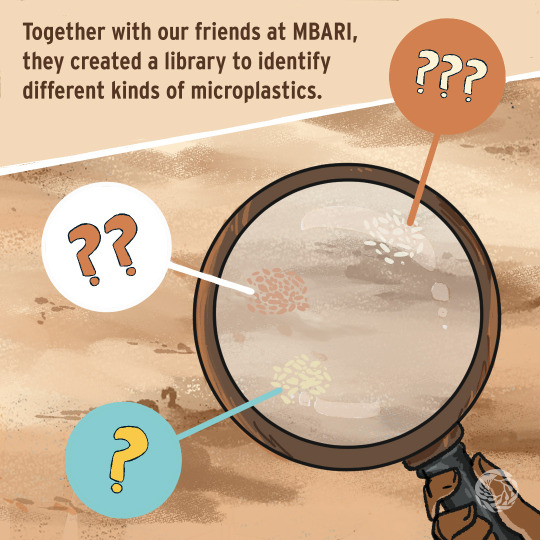
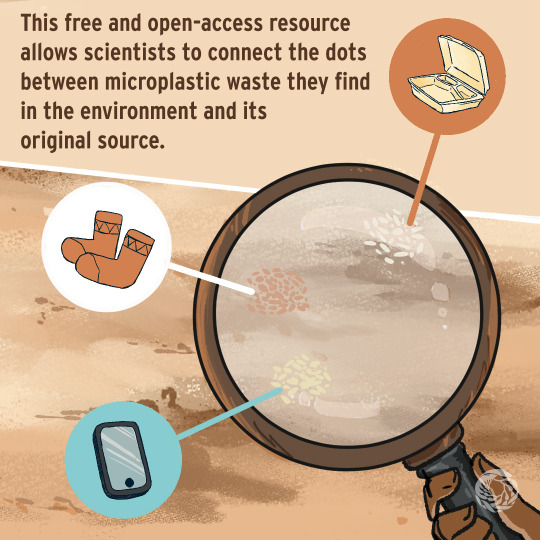
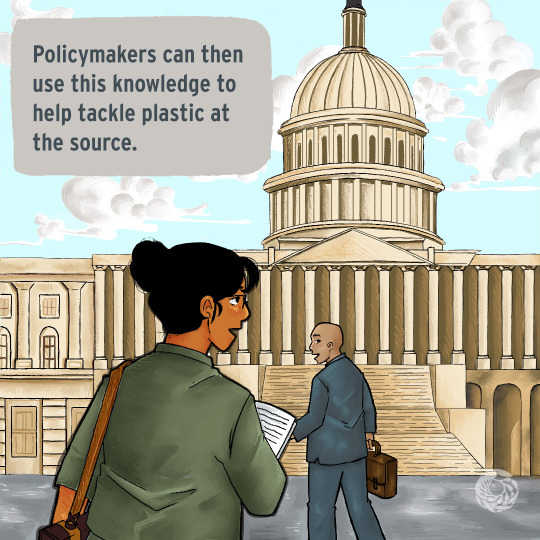

You can read more about the library on our website. Together we can take down plastic pollution! 💙🌍
#monterey bay aquarium#open source innovation sensation#journey to the solution to plastic pollution
4K notes
·
View notes
Text
Sports have gotten more and more environmentally friendly, whether it's by reducing plastic waste at arenas, or producing medals with recycled materials. But what if the sport itself was devoted to directly helping the planet? Take a look at SpoGomi, a competitive sport in which teams collect garbage and litter within a time limit and specified area. People get to exercise and improve their communities while simultaneously reducing pollution. It's an overall win!
The name “SpoGomi” comes from “sports” and “gomi,” which means “trash” in Japanese. SpoGomi was created in Japan in 2008 as a way to promote trash collecting in an effort to aid the environment and push back on the climate crisis. “The marine litter problem is becoming increasingly serious worldwide,” reads a message from SpoGomi. “Approximately 80% of the garbage in the ocean is said to come from land (cities), and picking up garbage is the ‘last line of defense' to prevent this from happening. By connecting countries and people, we have expanded our circle even further around the world.”
Now, supported by The Nippon Foundation, the sport is so popular that there are competitions around the world, including the first SpoGomi World Cup, which was held in Japan in November 2023. People from 20 countries and all of Japan's prefectures participated, with the UK team coming out in first place.
SpoGomi is more than simply picking up trash, though, as there's a whole set of rules. These game rules are flexible depending on the area and litter to be picked up. Generally, teams are made up of three to five members who have to collect as much trash as possible within a designated area and time limit. The most common duration is an hour for picking up trash plus another 20 minutes to correctly sort it.
Some trash can be extra damaging to the environment or harder to spot, meaning each piece of litter gets a different amount of points. According to Nippon.com, the rules for World Cup regional preliminary rounds have burnable and nonburnable trash at 10 points per 100 grams, cans and bottles at 12 points, and PET plastic bottles at 25 points. The crown jewel of competitive trash picking are cigarette butts, which will get the team 100 points each.
Other rules stipulate that teams cannot pick up trash that is already in bins that belong to someone else. Since everything must fit into the trash bags that are provided, they cannot pick hazardous waste or bulky items either. And since this is meant to improve the local area, any method of transportation other than walking is frowned upon.
In the end, all participants can bask in the pride of making the environment just a little bit cleaner and healthier. Udagawa Takayasu, a spokesperson for The Nippon Foundation, even admits, “I participated in a preliminary tournament held in Japan just last weekend. Although our team could not win and I faced frustration, the city became markedly cleaner. I think it's one of the fascinating aspects of SpoGomi, even if you don't win, it leaves you with a positive sentiment.”
-via My Modern Met, May 20, 2024
--
Hell yeah, gamify this shit!
#litter#trash#pollution#garbage#waste#waste management#environment#plastic#plastic waste#plastic pollution#japan#asia#good news#hope
1K notes
·
View notes
Text
Cute how it's such a human constant to keep little figurines of other people, characters or animals around. I mean some of the oldest artifacts we have along with tools are figurines, and I know of a lot of evidence from different cultures that they were valued more than mere objects/decoration, communicated with to some degree etc. Idk if it's truly a cross-cultural universal but it seems to be quite common. If you think about it, anime boy funko pop is just a continuation of this ancient human tendency
61 notes
·
View notes
Text
From the article:
Researchers led by Takuzo Aida at the RIKEN Center for Emergent Matter Science (CEMS) have developed a durable plastic that won’t contribute to microplastic pollution in our oceans. The new material is as strong as conventional plastics and biodegradable, but what makes it special is that it breaks down in seawater. The new plastic is therefore expected to help reduce harmful microplastic pollution that accumulates in oceans and soil and eventually enters the food chain.
#biodegradable plastic#plastic#microplastic#microplastic pollution#plastic pollution#ocean pollution#ocean conservation#good news#hope#hopepunk#habitat#environment#ecology
961 notes
·
View notes